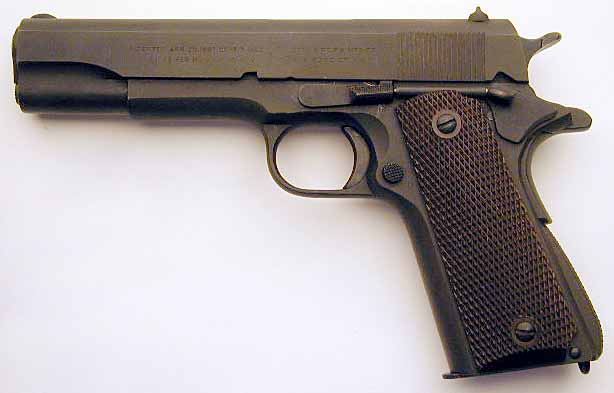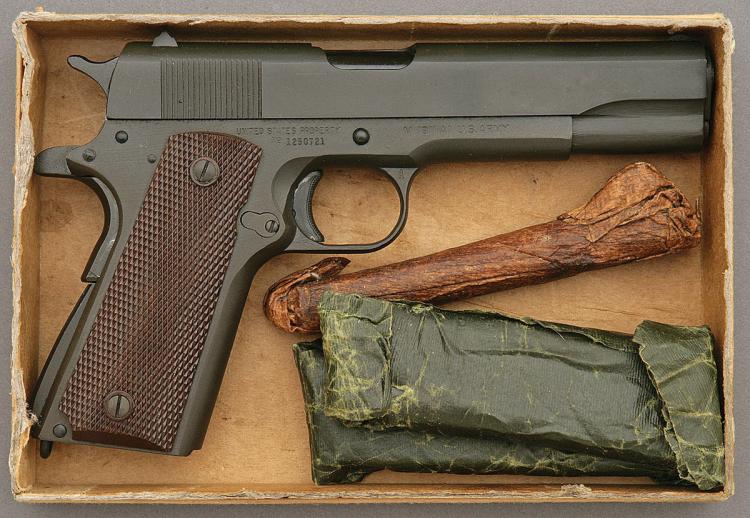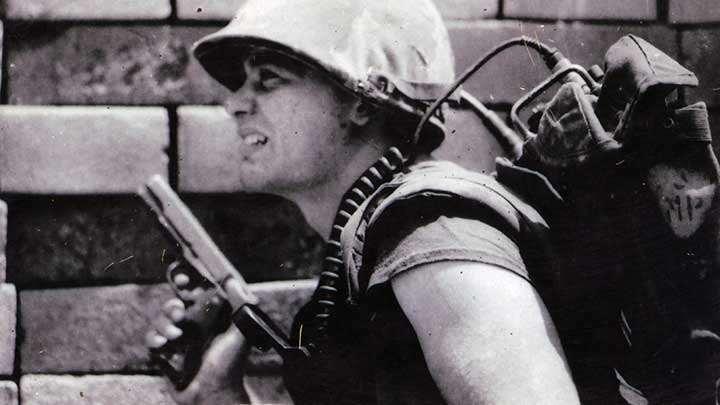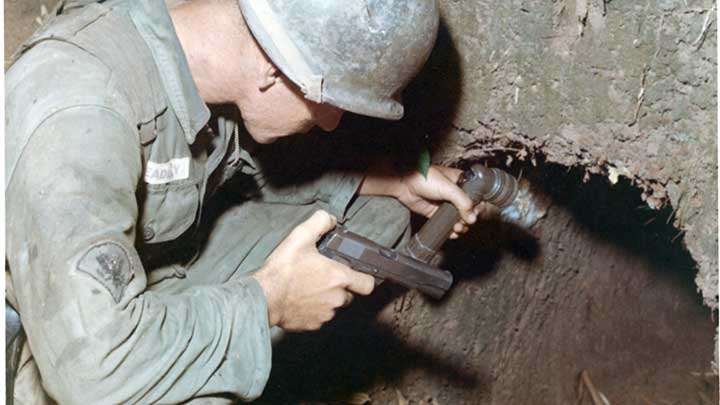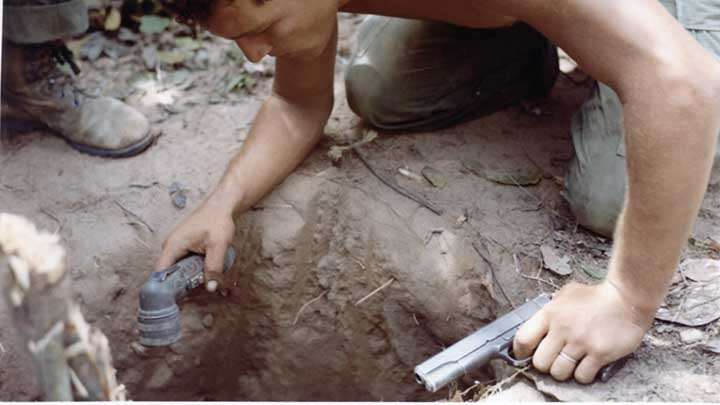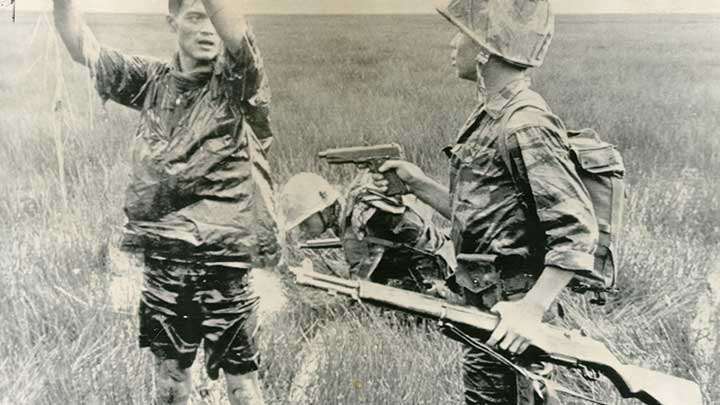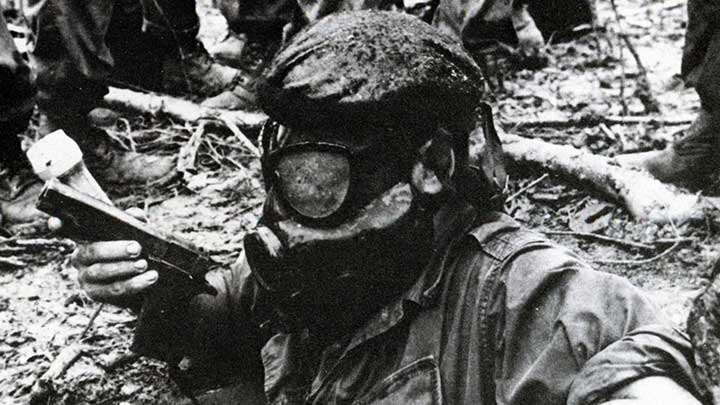Dual M1911A1
| Factions | Weapon | Icon | Classes | Ammo |
|---|---|---|---|---|
 US |
 Dual M1911A1 |
 |
Gun Game Zombies |
14+2 / 42 |
| Damage Base | Headshot × | Chest × | Stomach × | Leg × | Arm × | Reload Speed | |
|---|---|---|---|---|---|---|---|
| Partial | Empty | ||||||
| 35 | ×2.6 = 91 | ×1.7 = 59.5 | ×1.6 = 56 | ×1.1 = 38.5 | ×1.05 = 36.75 | 3.133 Seconds | 3.466 Seconds |
| Designation | Weapon Type | Fire Modes | Fire Rate | Bullet Spread ° | Range Modifier | Muzzle Velocity | Projectile weight | Weight |
|---|---|---|---|---|---|---|---|---|
| Colt M1911 | Dual Pistols | Semi | 50 RPM | 9° & 5° ADS | 0.7 | 253 m/s | 14.9 g (229.9 gr) | 2.21 kg (4.87 lbs) |
| Full name | Caliber | Place of Origin | Date | Manufacturer | Barrel Length | Total Length | Weapon Script Name |
|---|---|---|---|---|---|---|---|
| Automatic Pistol, Caliber .45, M1911A1 | .45ACP | USA | 1911 | Colt Manufacturing Company, Smith & Wesson, Norinco, other companies | 5.03 in (127 mm) | 8.5 in (216 mm) | weapon_dual_m1911 |
The Colt M1911, designed by John Browning, is a renowned single-action, recoil-operated, semi-automatic pistol chambered for .45 ACP cartridge. It served as the standard-issue sidearm for the US Armed Forces from 1911 to 1985, with around 2.7 million units procured. Used widely in major conflicts like WWI, WWII, Korea, and Vietnam, it was replaced by the 9mm Beretta M9 in 1985.
HISTORY
The M1911 pistol emerged from a late 19th-century quest for a reliable semi-automatic firearm to replace existing revolvers in service. This pursuit coincided with a rapid adoption of new firearms by the United States, leading to various trials and tests. Notably, Hiram S. Maxim's principles on cartridge energy inspired the development of self-loading pistols by 1896, prompting interest from militaries worldwide, including the U.S.
Following initial tests in 1900, the U.S. Army encountered issues with available pistols, leading to further trials. The Colt M1911, alongside the Savage design, stood out during subsequent evaluations. The Colt's success, demonstrated by firing 6,000 rounds over two days without malfunction, led to its formal adoption by the Army in 1911. Renamed the M1911, it became a standard-issue firearm, serving notably during World War I. Subsequent modifications, culminating in the M1911A1, aimed to enhance ergonomics without altering its internal mechanisms, solidifying its status as an iconic American firearm.
SOURCE
-
A Marine radioman with his M1911 .45 ACP pistol at the ready during a search and clear mission South of Danang.
-
The entrance to Hell: A GI of the 25th Infantry checks the entrance to a VC tunnel outside Phu Hoa Dong during Operation Cedar Falls in January, 1967.
-
A “Tunnel Rat” of the 25th Infantry Division prepares to enter a VC tunnel near Cu Chi in the Hobo Woods during Operation Cedar Falls in January, 1967.
-
One way out: A GI of the 1st Cavalry Division, with M1911 and flashlight in hand, looks for a helping hand out of a VC tunnel complex during Operation Pershing in March, 1967.
-
An ARVN soldier covers a Viet Cong prisoner with his M1911 pistol and M1 Garand rifle in 1962.
-
The war underground: A “Tunnel Rat” descends into a VC tunnel wearing a gas mask while armed with a M1911 pistol and tremendous courage.
-
A Leatherneck of the 3rd Marine Division at Khe Sanh test fires his issue M1911A1 pistol along the perimeter of that infamous position prior to the 1968 siege.
